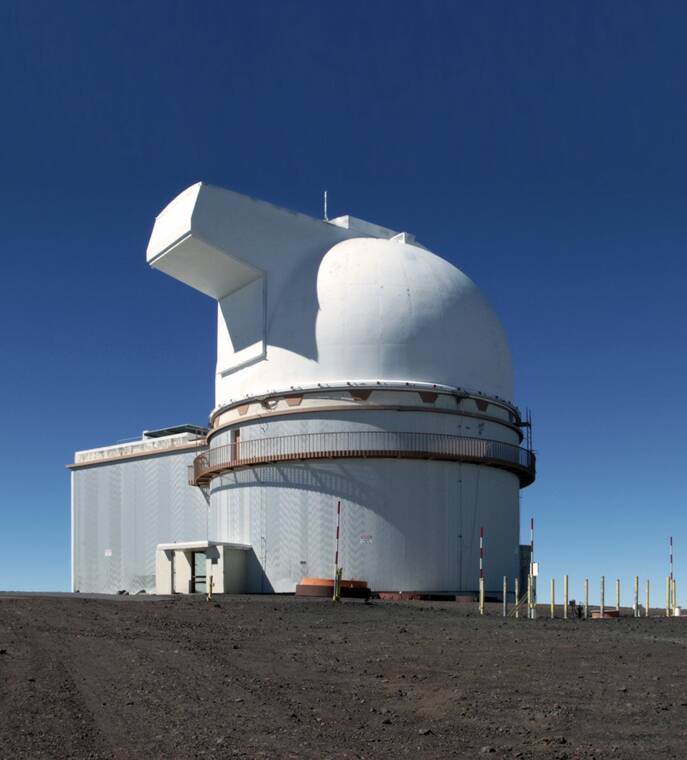Maunakea telescope to gather data while Mauna Loa observatory is down
A Maunakea observatory will fill in for an observatory on Mauna Loa that was shut down after the volcanic eruption.
The National Oceanic and Atmospheric Administration’s Mauna Loa Observatory lost power two weeks ago after lava from Mauna Loa cut off the sole access road to the facility. That observatory collected atmospheric measurements for more than six decades that allow scientists to track global climate change through carbon dioxide measurements.
Through an emergency agreement between NOAA and the University of Hawaii, the UH 88-inch telescope on Maunakea will be able to continue collecting that atmospheric data. Scientists installed an intake tube — 25 feet long but less than an inch in diameter — onto the observatory to sample the summit air.
“The data gathered over many decades in Hawaii are essential to our understanding of climate change,” said Steve Thur, NOAA assistant administrator for Oceanic and Atmospheric Research. “We are always grateful for the strong partnership with the University of Hawaii, but especially now when we need a way to ensure continuity in the measurement of CO2. Being able to pull atmospheric samples from Maunakea while MLO is down ensures that any disruption to this important long-term research will be minimal.”
The NOAA team will collect air samples in flasks to measure almost 60 gasses, including methane — the second most important greenhouse gas measurement after carbon dioxide — at intervals similar to what was being done at MLO before the eruption. Those air samples are also shipped to NOAA’s Global Monitoring Laboratory in Boulder, Colorado, for further analysis.
“As conditions related to climate change worsen around the globe, it was critical for UH to step in to assist NOAA as scientists scrambled to get atmospheric data collection back up and running,” said Doug Simons, director at the UH Institute for Astronomy. “Maunakea plays an important role in research that extends beyond astronomy.”
NOAA plans to continue measurements on Maunakea for at least a year to compare data with the Mauna Loa locations.
The NOAA team also worked with UH scientists to install a separate small intake tube on the existing weather monitoring station on Maunakea for carbon dioxide measurements by the Scripps Institution of Oceanography at the University of California in San Diego, which made independent carbon dioxide measurements at Mauna Loa.
NOAA staff continue to work with federal, state and private partners on plans to return to MLO and reactivate the facility.


